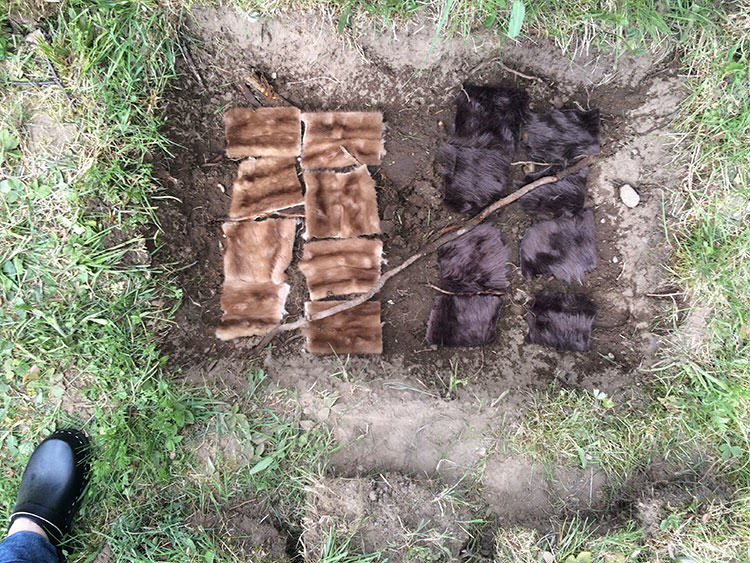
The fur industry is proud of the many ways in which fur is eco-friendly, including that after decades of use, it biodegrades. In contrast, when fake fur made from petrochemicals reaches the end of its useful, and typically very short, life, it goes in a landfill where it will sit until the end of time. Or will it? In pursuit of knowledge and truth, we decided to do a little experiment: the Great Fur Burial.
On May 14, we took a mink stole and a fake fur vest, cut them into equal-sized pieces, and buried them. Above is how the pieces looked on burial day. After 3 months, 6 months, and then once a year for five years, we would unearth a piece of the mink and a piece of the fake fur to check for degradation. This experiment is hardly scientific, but it only has to show one thing: do they rot, or not?
Three Months Later …
Last week we unearthed the first of the eight sets of fake and real fur. We set out to the burial ground, marked by two sticks.
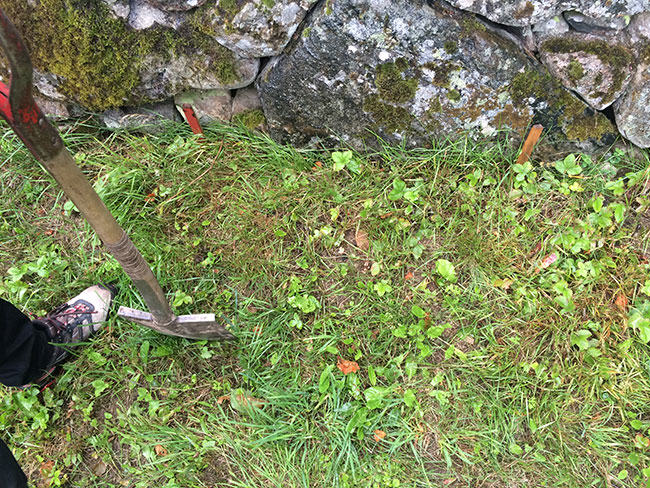
It only took a few seconds of digging to find the first piece of fake fur, which appeared to be fairly intact.
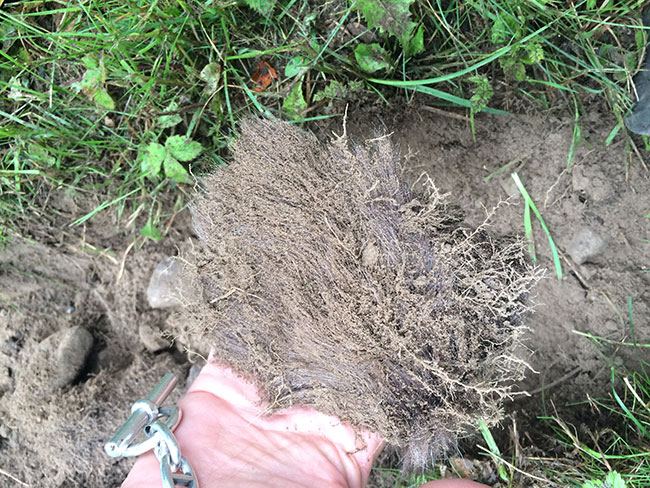
Finding the real fur was more of a challenge. We decided to dig by hand to avoid disturbing the site too much, and came across a sad-looking shred.
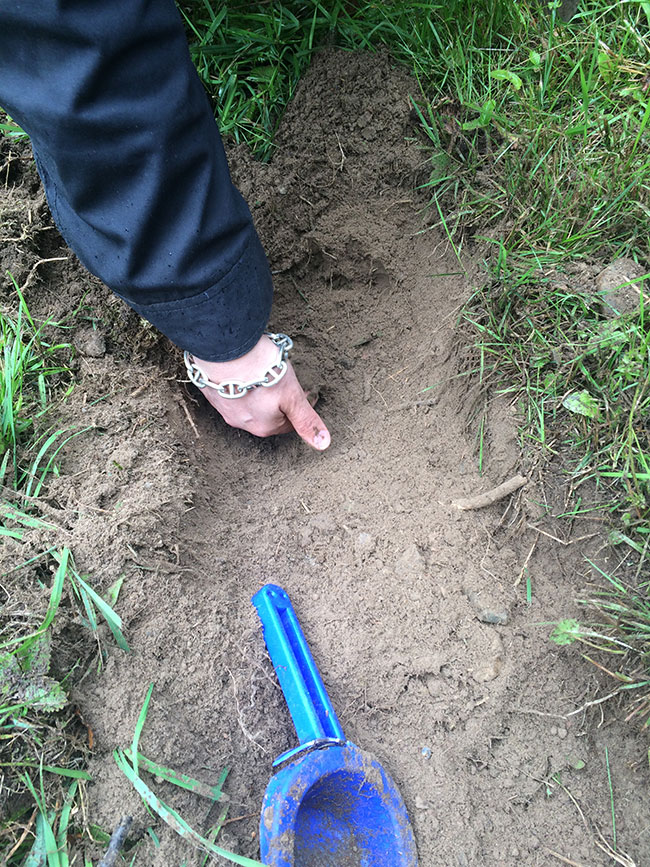
After refilling the grave, we put our exhumed samples onto a tray. It was time to have a closer look for signs of degradation.
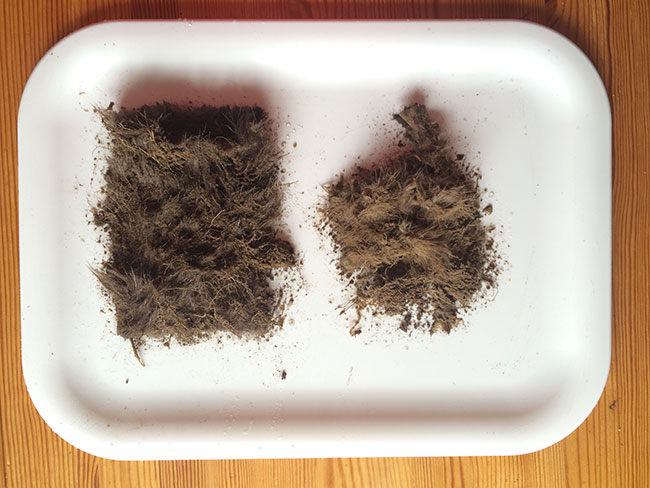
A lot of dirt was still attached to the samples, so a bit of gentle cleaning was in order. And here’s what we ended up with:
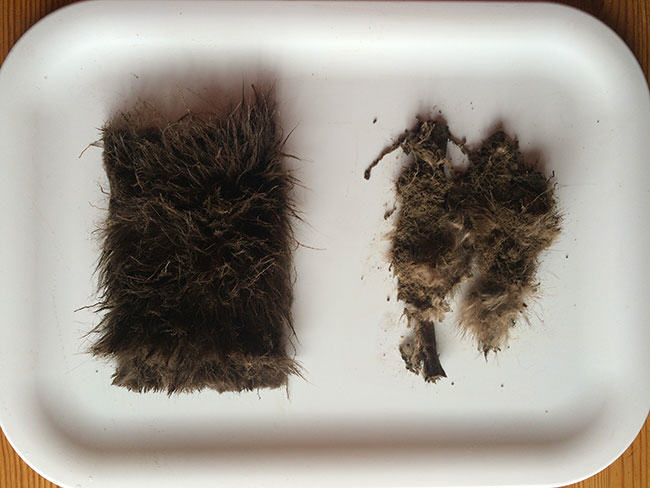
Ocular inspection immediately told us that the two samples, which were originally the same size, were not the same size anymore. The real fur sample was much smaller.
Closer inspection revealed that the synthetic fur was pretty much intact, front and back.
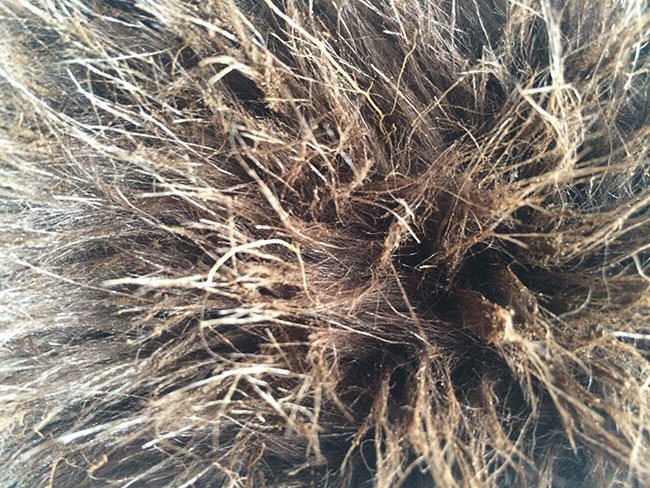
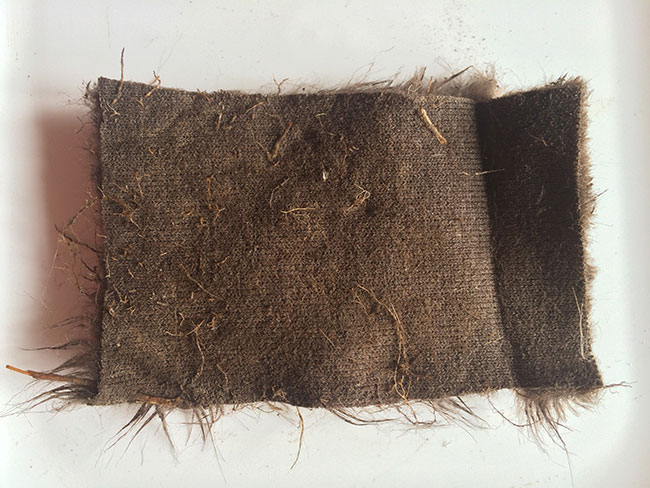
The real fur, on the other hand, was falling to pieces, and was held together by the threads from the letting-out sewing process. The leather had all but disappeared and most of the hairs showed clear signs of biodegradation.
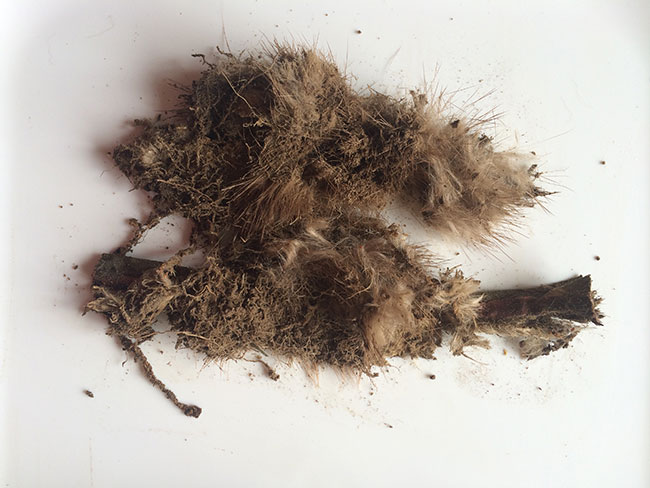
We’re only three months into a multi-year experiment, and already the findings are quite dramatic.
Equal-sized pieces of fake and real fur were buried side by side. After three months, the fake fur showed no obvious signs of degradation, biological or otherwise. In other words, it was perfectly intact. The real fur, however, was in an advanced state of degradation, in particular the leather.
Like all good scientists, we’ll hold back on making conclusions until the experiment has run its course. But the way things are headed, it might not be long before we’re using tweezers and a magnifying glass to find a real fur sample. It will all then be down to the fake fur samples. Will they degrade in five years? Or by the end of time?
Read the other installments of this experiment:
The Great Fur Burial, Part 1: Burial
The Great Fur Burial, Part 3: After Six Months
The Great Fur Burial, Part 4: After One Year
SEE ALSO: New study compares natural and fake fur biodegradability. Conducted by Organic Waste Systems, Ghent, Belgium; commissioned by the International Fur Federation and Fur Europe, 2018.











Very interesting result!
Very much appreciated.
Thank You
lol..is that what they pay you for?
“Real” scientists get paid a lot more for doing the same kind of thing 🙂 We think this experiment is beautiful in its simplicity and cheapness, and every bit as valid as commissioned reports on materials’ environmental impact costing thousands of dollars. Don’t you agree?